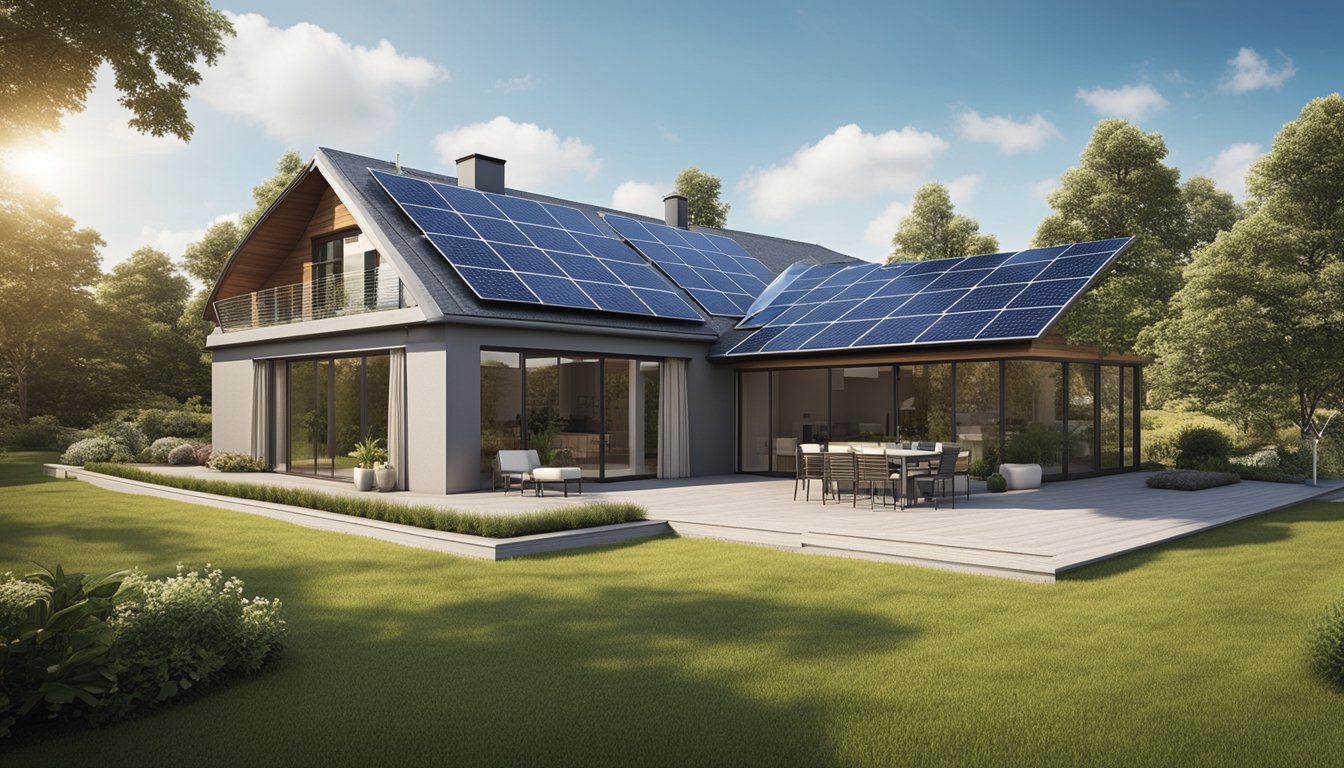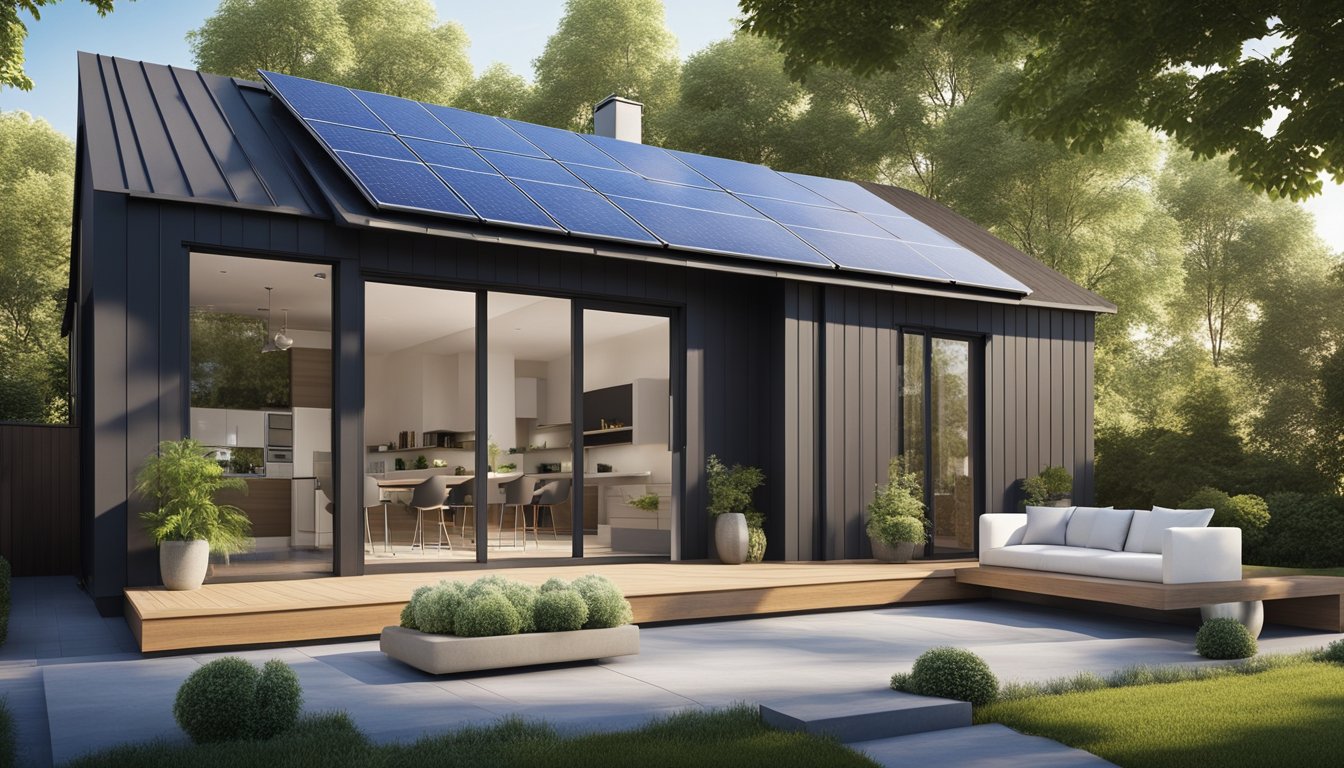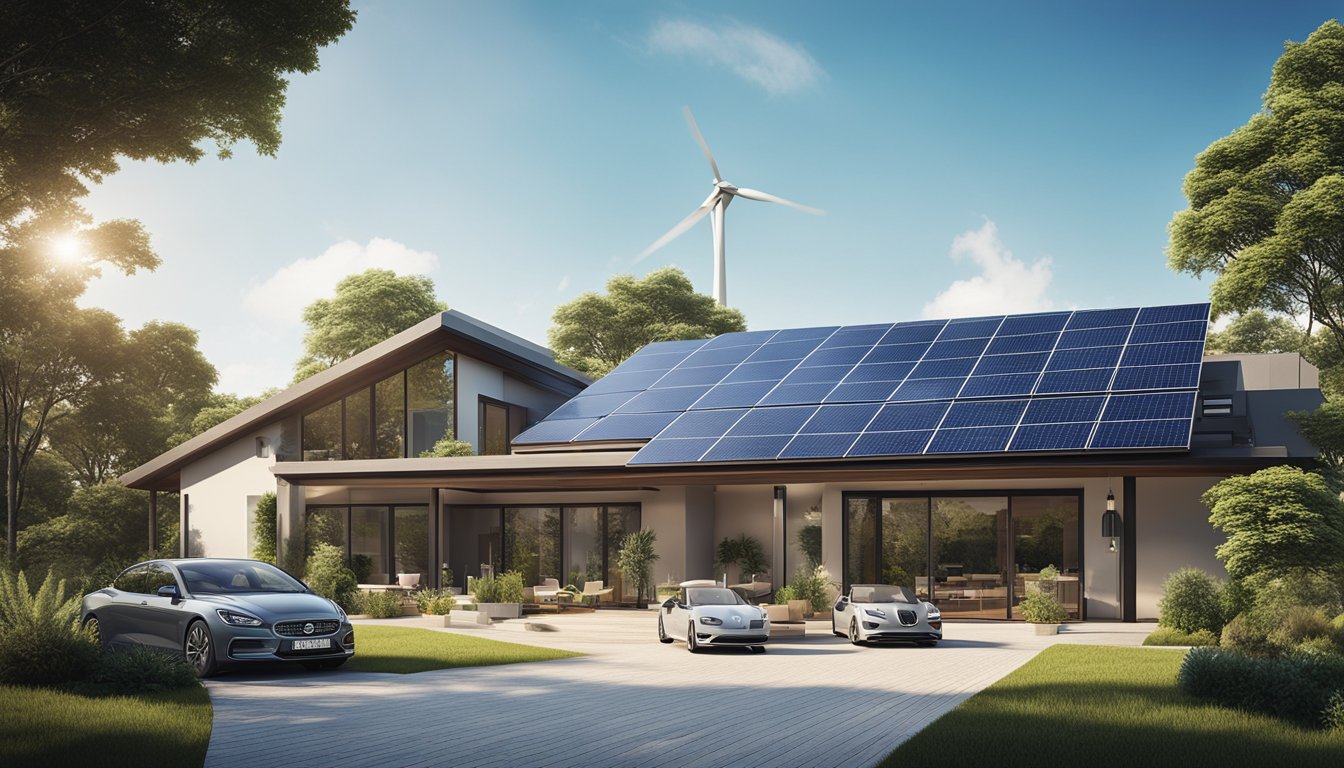Late updated: 14 Feb 2025 10:02
Written by: Eleanor Hartman
Maximising Home Energy Efficiency With Green Technology: A Guide to Sustainable Living
The rapid evolution of green technology promises a transformative approach to enhancing home energy efficiency. As responsible inhabitants of our planet, it is imperative that we explore and integrate these cutting-edge solutions to reduce our environmental impact. By using innovative technologies, we can dramatically cut down our energy consumption and contribute to a more sustainable living environment.

Smart homes equipped with the latest energy-saving devices not only provide convenience but also offer a way to optimise energy use. This shift towards eco-friendly home systems allows us to positively impact the planet while enjoying greater economic savings. From smart thermostats to advanced insulation techniques, the array of options available empowers us to create homes that align with our green living goals.
Exploring green technology in our homes presents a dual benefit. These solutions are not only aimed at reducing our carbon footprint but also offer notable cost savings over time. The journey to sustainable living involves understanding and implementing these technologies to enhance our energy efficiency and overall home efficiency.
Key Takeaways
- Innovative technology can significantly reduce energy use.
- Green homes offer both environmental and economic benefits.
- Implementing energy-saving solutions supports sustainable living.
Innovative Green Technologies for Home Energy Optimisation
Embracing green technologies in our homes can significantly enhance energy efficiency, reduce our carbon footprint, and contribute to overall sustainability. By integrating solar power, smart home tech, and insulation upgrades, we can optimise energy use effectively.
Harnessing Solar Power with Photovoltaic Panels
Photovoltaic (PV) panels convert sunlight into electricity, making it a perfect renewable energy solution. By installing solar panels, we can harness the sun's power to lower traditional energy consumption, offering substantial cost savings. Tankless water heaters utilising solar-heated water further enhance these benefits. Additionally, solar buyback programmes allow us to sell excess energy back to the grid, promoting energy conservation and bolstering savings. Considering building codes is crucial to ensure efficient and compliant installations. Evaluating regional sunlight availability can maximise efficiency, making solar panels an eco-friendly choice that aligns with modern sustainability goals.
Upgrading to Smart Home Technologies
Smart home technologies revolutionise energy management by utilising advanced systems. Smart thermostats and smart lighting systems adjust energy usage based on set preferences, reducing waste. By scheduling heating and lighting, these systems optimise energy use, saving costs and boosting efficiency. Smart appliances connect through the Internet of Things (IoT), enabling real-time energy monitoring and management. Implementing an energy management system enhances our control over household energy consumption. With these upgrades, smart homes offer convenient solutions towards sustainable living. Such technologies embed efficiency and comfort into our daily lives, underscoring the importance of smart home tech in achieving energy optimisation.
Improving Insulation and Window Efficiency
Ensuring effective insulation is vital for maintaining indoor temperature, thereby lowering energy demand. Utilising materials with a higher R-value boosts insulation performance, aiding both energy management and cost reduction. Upgrading energy-efficient windows further optimises energy conservation. These windows minimise heat loss and improve thermal performance, offering enhanced comfort. Like insulation improvements, energy-efficient windows need to comply with local building codes to maximise their effectiveness. Improved insulation aligns with sustainability efforts by significantly reducing a home's energy use. By enhancing insulation and window efficiency, we undertake essential home improvements with long-lasting environmental and economic benefits.
Economic and Environmental Benefits of Energy Efficiency

By maximising home energy efficiency, we not only save money but also contribute to sustaining our environment. From cost reductions through efficient energy use to reducing carbon footprints with green technology, energy efficiency offers comprehensive advantages. Battery systems further enhance these benefits by allowing flexible energy storage.
Cost Reduction through Efficient Energy Usage
Efficient energy usage significantly reduces utility costs. By implementing energy-efficient lighting and smart irrigation systems, we can noticeably cut our energy consumption. These adjustments lead to cost savings by decreasing the amount of energy households require for daily activities.
A practical example includes the installation of LED bulbs, which consume less electricity than traditional lighting. This shift towards energy conservation is both economically sensible and environmentally beneficial. The savings accrued from reduced energy bills can contribute to other sustainable living initiatives.
Reducing the Environmental Impact with Green Alternatives
Green alternatives play a crucial role in reducing our carbon footprint. By utilising renewable energy sources like solar and wind, we minimise the dependence on fossil fuels. This aligns with global sustainability efforts and promotes a healthier environment.
Implementing these technologies helps reduce the ecological damage caused by conventional energy sources. Solar panels, for instance, convert sunlight directly into electricity, bypassing harmful emissions entirely. With creative commons and open access initiatives, more communities can adopt these green solutions, further advancing environmental protection.
Storage Solutions: The Role of Battery Systems
Battery storage systems are pivotal in enhancing energy efficiency. They allow us to store excess energy generated from renewable sources, ensuring a constant energy supply even when production is low. This technology maximises utility and allows us to use energy more sustainably.
These systems are part of a broader move towards self-reliant and sustainable energy consumption. By storing surplus energy, families can reduce their reliance on the grid and contribute to energy independence. By factoring in battery storage, we ensure that renewable energy is a practical and reliable resource for homes.
Frequently Asked Questions

Maximising home energy efficiency is achievable through sustainable technology and thoughtful design. We explore effective methods for energy conservation, eco-friendly design principles, and the role of renewable energy in reducing environmental impact.
What methods are most effective for improving a home's energy efficiency through sustainable technology?
Implementing LED lighting and installing smart thermostats can significantly improve energy consumption. Retrofitting older appliances with energy-efficient models further enhances savings. Integrating solar panels provides a renewable energy source that reduces reliance on the grid.
In what ways can eco-friendly design principles be incorporated into a household to enhance energy conservation?
Using passive solar design involves strategically positioning windows to maximise sunlight while minimising heat loss. Incorporating green roofs or walls can improve insulation and reduce heating and cooling costs. Choosing sustainable materials for construction and renovation also plays a vital role in energy efficiency.
How does green computing contribute to overall household energy efficiency?
Adopting energy-efficient appliances and devices helps decrease electricity usage. We can further optimise energy consumption by enabling power-saving modes and unplugging devices when not in use. Investing in servers or computers with a high Energy Star rating also promotes eco-friendliness.
Could you elucidate the role of smart home technology in reducing energy consumption?
Smart home tech automates systems to balance energy use with demand. Devices like automated lighting systems and smart plugs can shut off power when not needed. These technologies are designed to track usage patterns and suggest tailored savings measures, offering both convenience and efficiency.
What renewable energy options are available for residential properties seeking to minimise environmental impact?
Solar panels remain a popular choice, converting sunlight into electricity. Wind turbines and geothermal systems are alternatives that harness natural resources, providing clean energy. For homes located near water sources, micro-hydroelectric systems are viable.
How can insulation improvements assist in the reduction of energy usage in domestic environments?
By enhancing wall and attic insulation, we can prevent thermal loss. Installing double-glazed windows further reduces energy demand by maintaining consistent indoor temperatures. Effective insulation helps maintain a comfortable living environment without excessive heating or cooling needs.